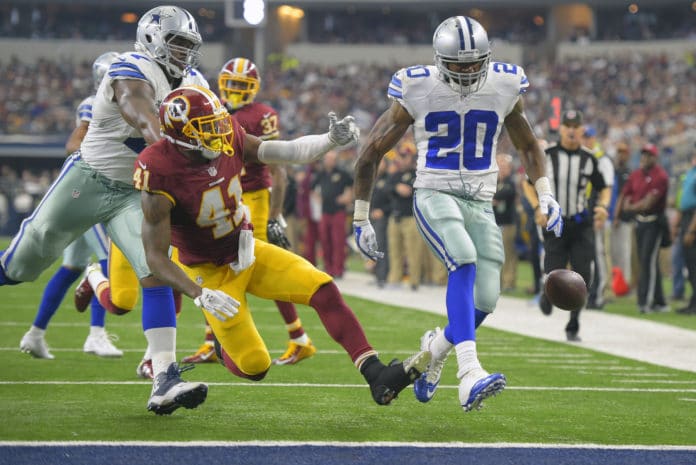If an NFL franchise were a body, draft history would be a vital sign. It doesn’t tell you everything that’s going good or bad with the team, but it can distinguish a chronic condition from a one-time misdiagnosis of Ryan Leaf.
In the accompanying interactive, you can analyze the past 20 years of any team’s draft picks in all sorts of ways. The Dallas Cowboys have been less successful in the draft than the NFL average since 1996. Their best pick was DeMarcus Ware in 2005 and their biggest bust was Bobby Carpenter in 2006. Click on the interactive graph at the bottom of the story to see more.
You’ll see that – despite a system created to benefit bad teams – some teams simply choose better than others, year after year. Why is that?
When you have a health question, you ask a doctor. When you have a draft question, you talk to Mel Kiper, ESPN’s draft sage for more than 30 years.
So we asked Kiper how, in the age when the NFL practically mandates parity, some teams still manage to draft well and others manage to draft terribly, year after year.
“Stability,” Kiper said. During the past two decades, the top three franchises in our analysis, Pittsburgh, Indianapolis and Green Bay, have been models of continuity.
“The NFL has always created the draft to allow for so-called parity, if teams are confident and really knew what they were doing,” he said. “The good teams are picking late in every round, so they have to really sit back and see what falls to them. Whereas bad teams are picking at the top.”
The fact that late-picking teams must mold players from farther down the food chain makes player development a necessity for a team to stay excellent over the long haul. That means a patient owner, a stable front office and a coaching staff that stays in place for, say, five to seven years rather than one to three. It means having people who are confident enough to avoid overreacting when mistakes are made.
Top team Pittsburgh, for instance, has had little front-office turnover and just three coaches since 1969.
Meanwhile, the bottom three, Buffalo, Oakland and Cleveland, have been models of chaos.
“You look at Buffalo: No stability,” Kiper said. “Oakland: head coach after head coach. Cleveland is a snake pit. . . . Look at all the Cleveland top picks that failed over the last 10 or 15 years. It’s a laundry list of names of players who just have not played even close to the level that you’d expect a first-round pick to play at. So it is a case where the rich keep getting richer despite having to deal with a system that should be supporting the bad teams. . . . If you’re picking early year after year and you can’t get players that are franchise changers, then something’s wrong.”
The polished products are gone by the late rounds. Even Tom Brady (sixth round, 2000) didn’t show up in New England looking like Tom Terrific.
So you look for great athletic ability, Kiper said. Look for an underachiever, who maybe got injured at the wrong time. Or maybe a guy who messed up off the field but has gotten his act together.
“You want guys who are very talented in the later rounds that happen to slide through for one reason or another,” he said. “And you take a chance. At that point it’s not costing you anything, so if there’s an issue, you let ’em go. That’s where you try to get the big reward for minimal risk.”
With this in mind, pick a team in the interactive and see how it fares in the past 20 years of drafts. If you’re from Buffalo, Oakland or Cleveland, bring tissues.
– – –
Interactive graphic: Some teams seem to always strike gold on draft day, while others just find rocks. (We’re looking at you, Cleveland.) Revisit the past 20 NFL drafts to see how adept every team has been at mining top talent. (Tim Meko, Denise Lu, Bonnie Berkowitz and Lazaro Gamio/ The Washington Post).
URL: https://www.washingtonpost.com/graphics/sports/nfl-draft-history/






